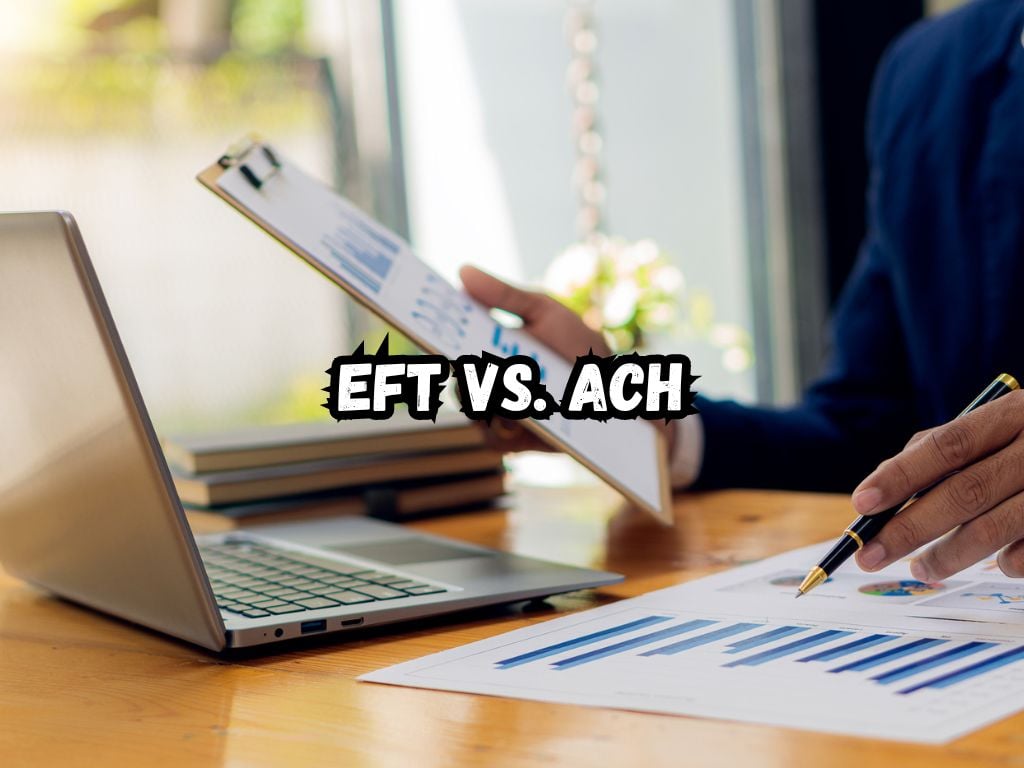In the evolving landscape of digital transactions, understanding the nuances between Electronic Funds Transfer (EFT) and Automated Clearing House (ACH) payments is vital for individuals and businesses alike.
This article delves into the definitions, EFT vs ACH key differences, advantages, and suitable use cases for EFT and ACH, offering insights into security considerations and the future of electronic payments.
Definition of Terms
Electronic Funds Transfer (EFT)
Electronic Funds Transfer represents a wide array of financial transactions conducted over computer networks. EFTs encompass methods such as direct deposits, wire transfers, debit card transactions, and online payments.
The core of EFT’s functionality lies in its ability to transfer funds between accounts, across institutions, and even borders, with minimal physical intervention.
Automated Clearing House (ACH)
ACH, a subset of EFT, specifically refers to the electronic network for financial transactions in the United States. It facilitates the process of bulk transactions, primarily for payroll, direct deposit, tax refunds, and bill payments.
ACH transactions are processed through a central clearing facility, ensuring efficiency and reliability.

EFT Vs ACH: Key Differences
The distinctions between EFT and ACH surface in processing time, cost, and the spectrum of transactions they support.
While EFTs offer a broader range of transaction types, including international payments, ACH focuses on domestic bulk payments, typically showcasing lower transaction costs but limited global reach.
Additionally, the user’s control over transactions and the mechanism for resolving errors also varies, with EFT often providing more immediate, albeit sometimes more complex, solutions.
Pros and Cons of Each Method
Pros of EFT include its wide transaction variety and flexibility, catering to diverse needs such as instant transfers and international payments.
However, these transactions can attract higher fees and present complexity for users not familiar with digital payment systems.
ACH’s advantages lie in its cost-effectiveness for handling large volumes of payments and faster processing times for domestic transactions.
Its primary limitations are its focus on U.S. bank accounts, rendering it less suitable for international transactions, and its slower speed compared to certain EFT methods like wire transfers.
Suitable Use Cases
EFT shines in scenarios demanding swift or international transactions. It suits both individuals and businesses in need of immediate funds transfer or dealing with overseas partners.
Contrarily, ACH is the go-to for domestic bulk payments, including payroll and vendor payments, making it a staple in the operational frameworks of many organizations.
Security Considerations
In the realm of digital transactions, security remains paramount. Both EFT and ACH incorporate standard security measures, yet they emphasize the importance of users’ vigilance.
Enhancing security involves adopting practices such as encryption, secure connections, and regular monitoring of transactions for any signs of unauthorized activity.
Integration with Financial Software
For businesses, the integration of payment methods with financial software streamlines operations. Many platforms now offer seamless EFT and ACH integration, simplifying processes like payroll, invoicing, and reporting.
These integrations not only save time but also reduce the risk of errors, contributing to more efficient financial management.

Future of Electronic Payments
The future looks promising for electronic payments, with emerging technologies and trends shaping the landscape. Innovations like blockchain and real-time payments are set to offer even more security and convenience. As these technologies mature, EFT and ACH will likely evolve, offering more sophisticated options for users.
Frequently Asked Questions
What is the main difference between EFT and ACH payments?
The primary distinction lies in their scope; while EFT encompasses a broad range of electronic transactions, ACH specifically refers to a network handling bulk transactions in the U.S.
Are there situations where EFT is not recommended?
EFT might not be the best choice for domestic bulk payments where ACH offers a more cost-effective solution.
How do international ACH transfers work, and are they different from regular ACH?
International ACH transfers operate through specific agreements and networks that facilitate cross-border payments. They differ from regular ACH by involving additional regulations and fees.
What are some common security risks associated with EFT and ACH?
Risks include unauthorized access, fraud, and interception of transactions. Adopt security measures like using secure networks and monitoring accounts regularly to mitigate these risks.
Can EFT and ACH transactions be reversed?
Under certain circumstances, such as errors or unauthorized transactions, both EFT and ACH payments can be reversed, though the process may vary depending on the specific conditions and timeframe.
Navigating EFT and ACH reveals a complex but navigable world of digital finance. With the right knowledge and precautions, users can leverage these methods to their advantage, ensuring efficient, secure transactions in both domestic and international settings.
Conclusion
In the complex world of financial transactions, knowing the difference between EFT and ACH equips users with the knowledge to make informed decisions. Each method has its unique advantages and suitable applications.
By understanding these distinctions and considering the relevant security measures, individuals and businesses can navigate the digital financial ecosystem with confidence.


 Tags:
Tags:










